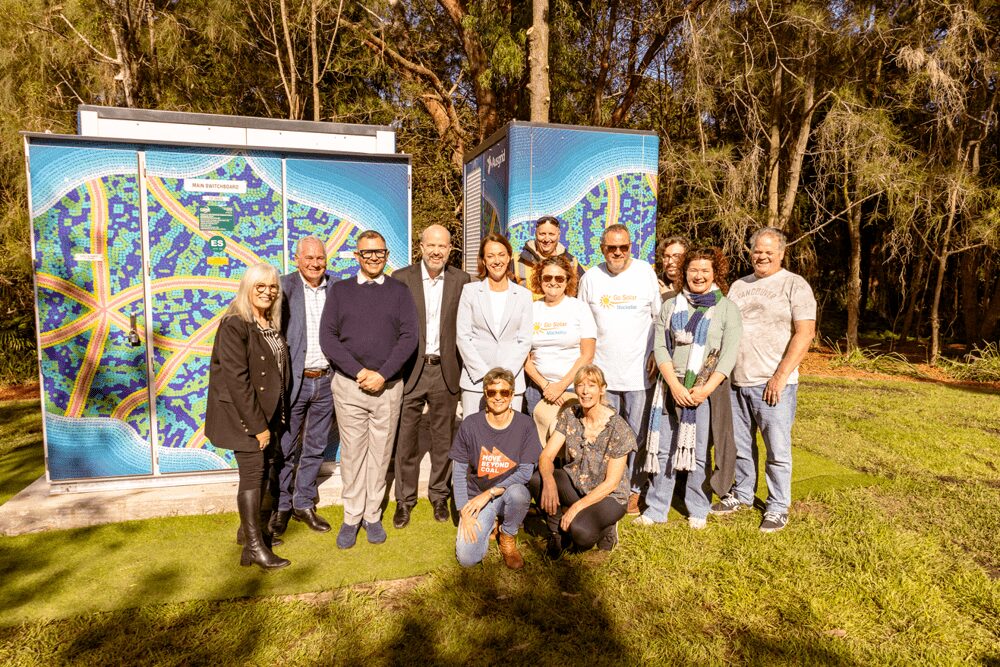
Researchers are harnessing next-generation photovoltaics materials to create a fast, accurate testing mechanism for harmful compounds.
In a colourful solution to a dangerous problem, Australian scientists are adapting a component from cutting-edge solar cells to design a rapid, light-based detection system for deadly toxins.
While the use of chemical warfare agents like sulfur mustard – better known as mustard gas – is banned internationally, we do rely on other strictly-controlled chemicals for agriculture, industry and throughout our daily lives, including fumigants like methyl iodide, which is used to control insects and fungi. The wrong amounts or incorrect use of these fumigants can be harmful to people and degrade the ozone layer.
Because it is invisible and does not smell, it is hard to determine whether there are dangerous amounts of methyl iodide present, and until now, the best way to test for it was in a laboratory using expensive, complicated equipment, which is far from practical in many real-world settings. Some cheaper, lightweight detection methods have been tried, but they didn’t have enough sensitivity and took too long to deliver results.
Now, research led by the ARC Centre of Excellence in Exciton Science has found a way to detect methyl iodide through changes in colour, with – for the first time – the accuracy, flexibility and speed necessary for practical use. Importantly, this new sensing mechanism is versatile enough for use in detecting a wide range of fumigants and chemical warfare agents.
Working with the Commonwealth Scientific and Industrial Research Organisation (CSIRO) and the Department of Defence, Monash University researchers borrowed some new technology that is being used to improve solar power – synthetic nanocrystals based on a perovskite structure – and turned it into a detection method.
Their approach relies on the fact that these highly fluorescent nanocrystals react with the fumigant causing a change in the colour of the light they emit.
The presence of methyl iodide causes the nanocrystal emission to shift from green to yellow, and then on to orange, red, and finally deep red, depending on the amount of fumigant present.
“Perovskite nanocrystals have proved to be a very efficient light emitter,” said lead author Dr Wenping Yin of Monash University.
“Here we showed that methyl iodide can react with such perovskites, and do so very quickly following a simple chemical activation step. Critically, this activation step cuts the response time of the sensor from a few hours to just a few seconds.”
In this process, the ions forming the nanocrystals change quickly when they are exposed to the methyl iodide triggered by a chemical reaction.
The reaction involves exchanging bromide with iodide within the nanocrystal itself, which results in the colour change.
Ultimately, the researchers have been able to demonstrate that the change in colour is dependent on the perovskite nanocrystal and methyl iodide concentrations.
“Although the chemical mechanism is very complicated, the outcome is just a colour change of the light produced by the nanocrystals, which is very easy to detect,” said Wenping.
The new mechanism has the widest range, highest sensitivity and quickest response ever achieved for a technique that does not rely on expensive laboratory instrumentation, producing its results in around five seconds at room temperature.
The researchers now hope their findings will provide a platform for building a test device that can be used in real-world applications.
Senior author Professor Jacek Jasieniak noted: “We’ve understood the foundational mechanism for what’s needed to undergo this colourimetric sensing. Now it’s about building a prototype sensing device.”
“It needs further development to realise its true potential for broader detection of different types of methyl halide species, as well as pesticides and chemical warfare agents, like teargas, and mustard gas, but the stage is set.”
Defence scientist and Industry Partner Investigator, Dr Genevieve Dennison further commented: “We are very excited about the potential demonstrated by this work and are looking forward to applying the technology to protect our military and first responders.”
The research has been published in the journal ACS Nano and is available here.











